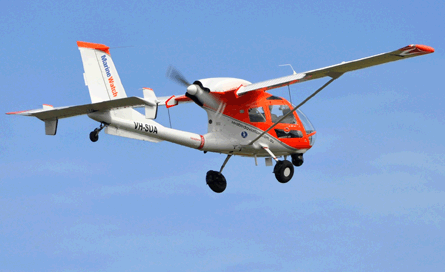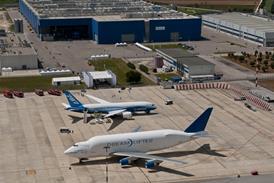Australian aircraft manufacturer Seabird Aviation has launched a major redesign of its Seeker patrol and surveillance aircraft in a bid to "revolutionise" airborne surveying.
The redesign includes new engines for improved hot and high performance; an increased maximum take-off weight and structural modifications to better accommodate larger sensor suites; and a glass cockpit.
The improved hot and high performance is provided by a Lycoming IO-390-A1B6 engine, which also allows dual alternators to be mounted, with the secondary unit to supply power to sensor suites, says Francois Van Teijlingen, programme manager systems integration. The new Seeker is designated SB7L-360A3.
 |
|---|
© Seabird Aviation |
To handle larger sensors, the aircraft's MTOW is being increased and the structural layout modified, with a large universal sensor mounting frame fitted on the bottom of the fuselage.
The tray will attach to the frame via four standardised quick-connect hardpoints. "Sensor providers will be able to integrate their sensors to the universal sensor frame rather than having to integrate to the aircraft itself. A multitude of quick-change payloads can thus be fitted to suit each mission requirement," says Van Teijlingen.
Modernisation of the instrumentation is with a glass cockpit comprising a Garmin G500 electronic flight display, an L-3 Trilogy ESI-2000 electronic standby instrument, complemented by twin Garmin GNS-430W GPS navigators.
The new Seeker will also feature a Garmin GTS-330ES transponder and a GMA-347 audio panel. To reduce pilot workload during extended missions, it will include an S-TEC 55X autopilot and yaw damper, while situational awareness will be improved through Garmin's GSR-56 satellite-based weather system and GTS-800 traffic advisory system.
Engine management will be provided by an Auracle CRM-2100 digital engine management system, while web-based tracking will be provided by an IndigoSat One satellite tracking system. The aircraft will be fully instrument flight rules certificated.
External lighting will consist of LED equipment.
Customers will also be able to select a Trimble Geospatial light detecting and ranging (lidar) system that will allow the aircraft to perform airborne laser scanning to the highest definition possible.
An automated flight assist system, developed with Australia's Co-operative Research Centre for Spatial Information and the Australian Research Centre for Aerospace Automation, which will automatically fly the aircraft along an optimised flight profile to maximise data capture, is also an option.
Provisioning has been made to mount gyro-stabilised gimballed camera system to complement the lidar suite for the inspection and maintenance of transmission lines, distribution and substations.
The first two aircraft have already been ordered by Queensland electricity provider Ergon Energy to survey its 150,000km (93,000 miles) of powerlines.
Flight-testing is scheduled to start around the middle of this year, with Ergon expected to take delivery in the third quarter.
Source: Flight International























